
The 1995 Orlando Magic Announced Hip-Hop’s Takeover of NBA Hoops
The 1995 Orlando Magic Announced Hip-Hop’s Takeover of NBA Hoops
Published Fri, June 19, 2020 at 11:35 AM EDT
Hip-Hop hit the NBA around the same time it hit most of mainstream pop culture. Kurtis Blow name-dropped a cavalcade of NBA stars on his 1984 single “Basketball,” a tune that would go on to be featured in countless NBA highlight reels and advertisements in the years following its release.
A few years later the Chicago Bulls dropped a forgettable and regrettable “Super Bowl Shuffle”-style novelty rap song after they beat the Los Angeles Lakers to claim the 1991 NBA title. But when Magic Johnson’s Lakers lost to the Boston Celtics in 1984, Magic consoled himself in the locker room with James Ingram songs. And when Michael Jordan hit the game winner over the Cleveland Cavaliers to send his Bulls to the second round of the 1989 NBA playoffs, he credited his favorite song for motivation: “Giving You the Best That I Got” by Anita Baker.
Even as rappers started selling big records and Hip-Hop had become more visible, it was still a stretch to say the biggest names in the NBA were Hip-Hop heads, really.
By the early 1990s, the league was enjoying tremendous popularity. The ’80s had seen the pop culture ascendency of figures like Jordan, Magic and Larry Bird, transcendent stars who became standard-bearers for American sports and contemporary pop mythology. That wave of popularity reached its apex with the Bulls’ first championship “three-peat” and 1992’s Olympic Dream Team, the legend-studded basketball roster that won gold at the Barcelona Games that year.
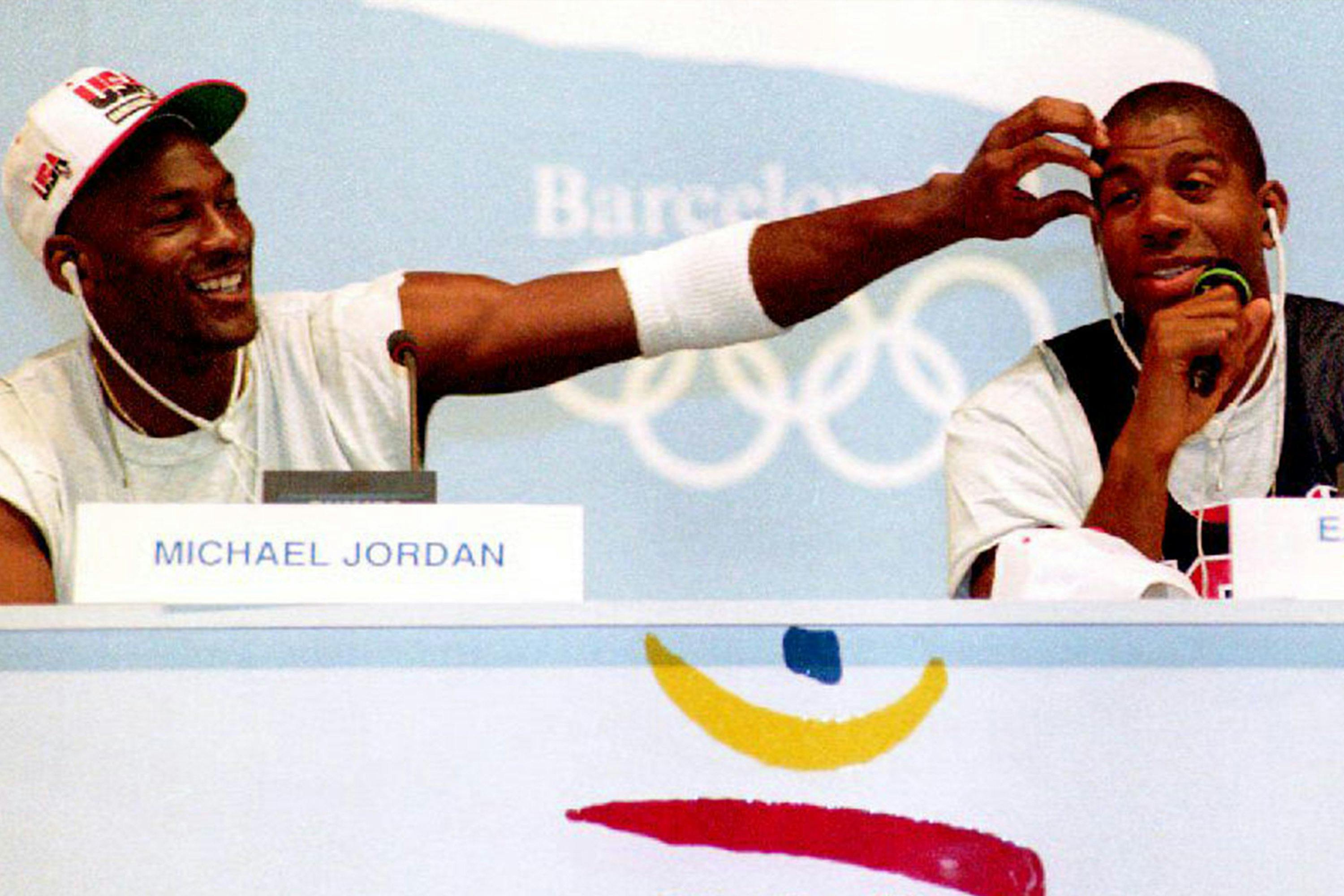
Photo: KARL MATHIS/AFP via Getty Images)
But Johnson never played a full NBA season after 1991, and Bird never played again at all after the 1992 Olympics. In 1993, Jordan announced he was walking away from basketball at age 31. Even with luminaries like Charles Barkley, Hakeem Olajuwon, and David Robinson still dominating the game, it felt like an era had passed in pro hoops.
And a new school was emerging that didn’t seem to be quite ready for its close-up.
On the heels of the legendary 1992 Olympic team, the 1994 USA basketball team (dubbed “Dream Team II”) was criticized for “unsportsmanlike” play, as stars like Shawn Kemp and Alonzo Mourning displayed a brashness that had some older media figures aghast. “Some of the people said some of the antics were classless, that we should have held back,” Mourning would recall in 2014. “But when I'm out there screaming after rebounds and dunks — those are primal noises. It’s no disrespect. When I would flex after a block...that’s me enjoying the game. That’s a release.”
A shift was happening. It was back in 1990 and 1991 that a team of college ballers out of UNLV stole the national spotlight from a lauded Duke squad and announced the dawn of a new generation. Led by Larry Johnson, Greg Anthony, and Stacey Augmon, the 1990 Runnin’ Rebels men’s basketball team was unmistakably new school, and they shocked the world by taking down the more establishment-seeming Duke Blue Devils. They would fall to Duke the following year, and Johnson in particular would go on to NBA stardom with the Charlotte Hornets. But immediately following UNLV’s demise, Michigan’s incoming ’91 men’s team, led by a quintet of cocky freshmen famously dubbed “the Fab Five,” further galvanized the Hip-Hop generation’s assertion of basketball’s cultural voice. Michael Jordan and the Bulls had run away with the NBA, but college ball’s most intriguing squad was Michigan’s crew of teenagers rocking baggy shorts and black socks.
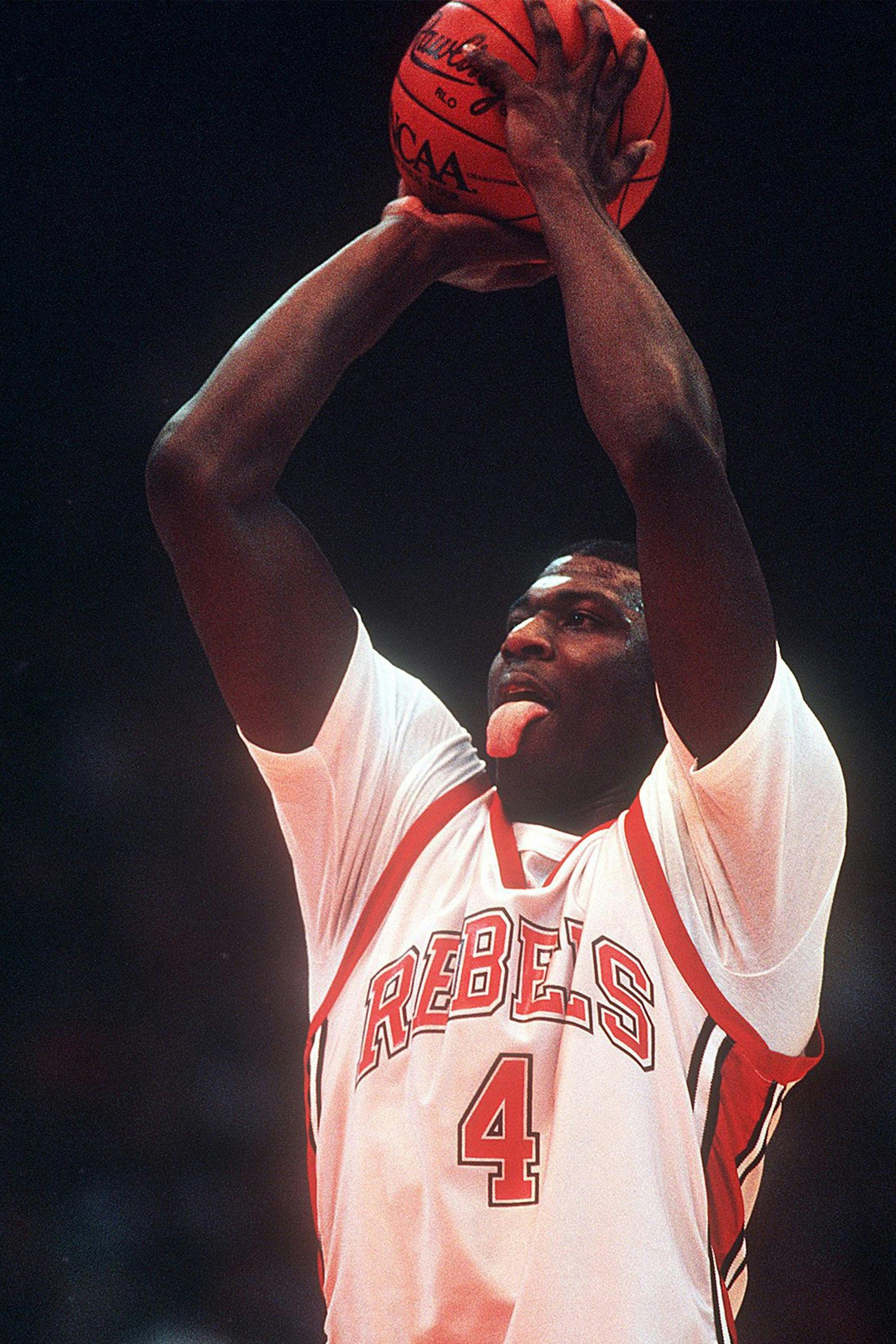
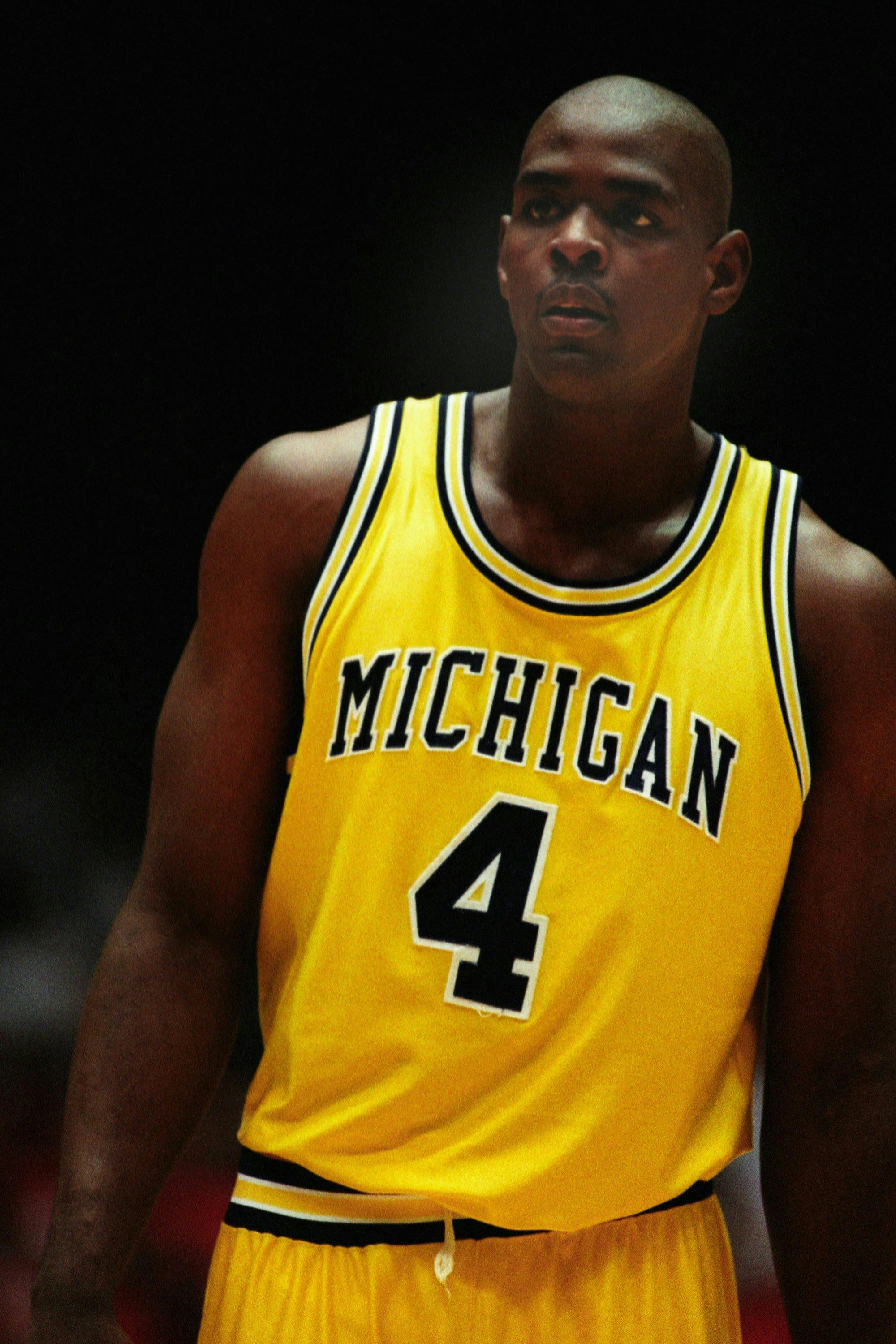
Photo: NCAA Photos / Getty Images/Photo by Mitchell Layton/Getty Images
Despite the ascendance and cultural impact of UNLV and especially the Fab Five, the first post-Hip-Hop wave of NBA stars hadn’t exactly taken the league by the horns. Young guns like Johnson, Kenny Anderson, Derrick Coleman, and Isaiah Rider had entered the NBA with fanfare but famously struggled with the weight of the spotlight. Coleman was arrested for assault just after becoming the highest-paid player in the league; Rider was also charged in an assault against a woman at a sports bar in 1994. There was a question of who would carry the league once the Dream Team generation was no more, and while so many young stars hadn’t quite lived up to the hype or met the demands of that kind of stardom, there was a giant in Orlando who was proving more than ready to be the new face of the league.
Shaquille O’Neal was a 7’1”, 325-pound basketball freak; a giant of a player with a skill set that was as layered and refined as it was dominant. Drafted out of LSU in 1992, Shaq was unstoppable, and he immediately made the wretched Orlando Magic relevant to media and fans. And he was undeniably Hip-Hop: He liked to rap for teammates, breakdanced in the locker room, had a huge Superman logo tatted on his left biceps, and would soon add “The World Is Mine” on his right. Dennis Rodman’s transformation into a body-art phenomenon had just happened, but urban culture’s fixation on tats was still relatively new. Here was the NBA’s newest, biggest superstar, freestyling in interviews and flashing his ink.
In so many ways, Shaq was unlike anything the league had ever seen. Centers had been notoriously un-fan-friendly; legends like Bill Russell and Kareem Abdul-Jabbar were famously branded standoffish by the media. But O’Neal was as gregarious off the court as he was unstoppable on it; a rhyming, back-spinning wunderkind taking a young franchise to new heights. He appeared on The Arsenio Hall Show in 1992 and rapped with Fu-Schnickens, then the following year, Shaq released his own debut rap album — the platinum-selling Shaq Diesel. Shaq brought the swagger of the NBA’s new generation to the mainstream, embracing his role as ambassador and superstar of the league in a way that others like Coleman had not.
And he was about to get an uber-talented sidekick.
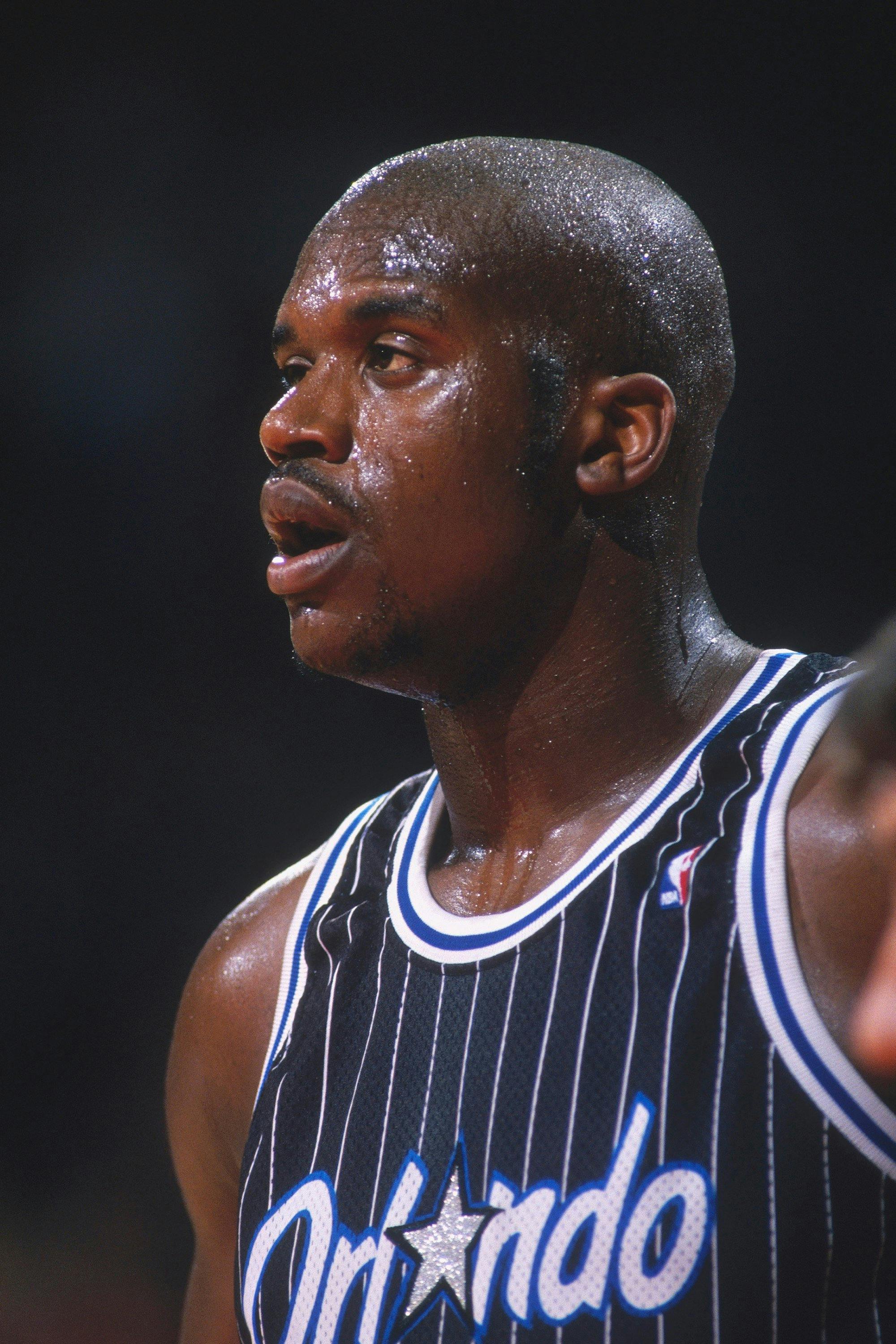
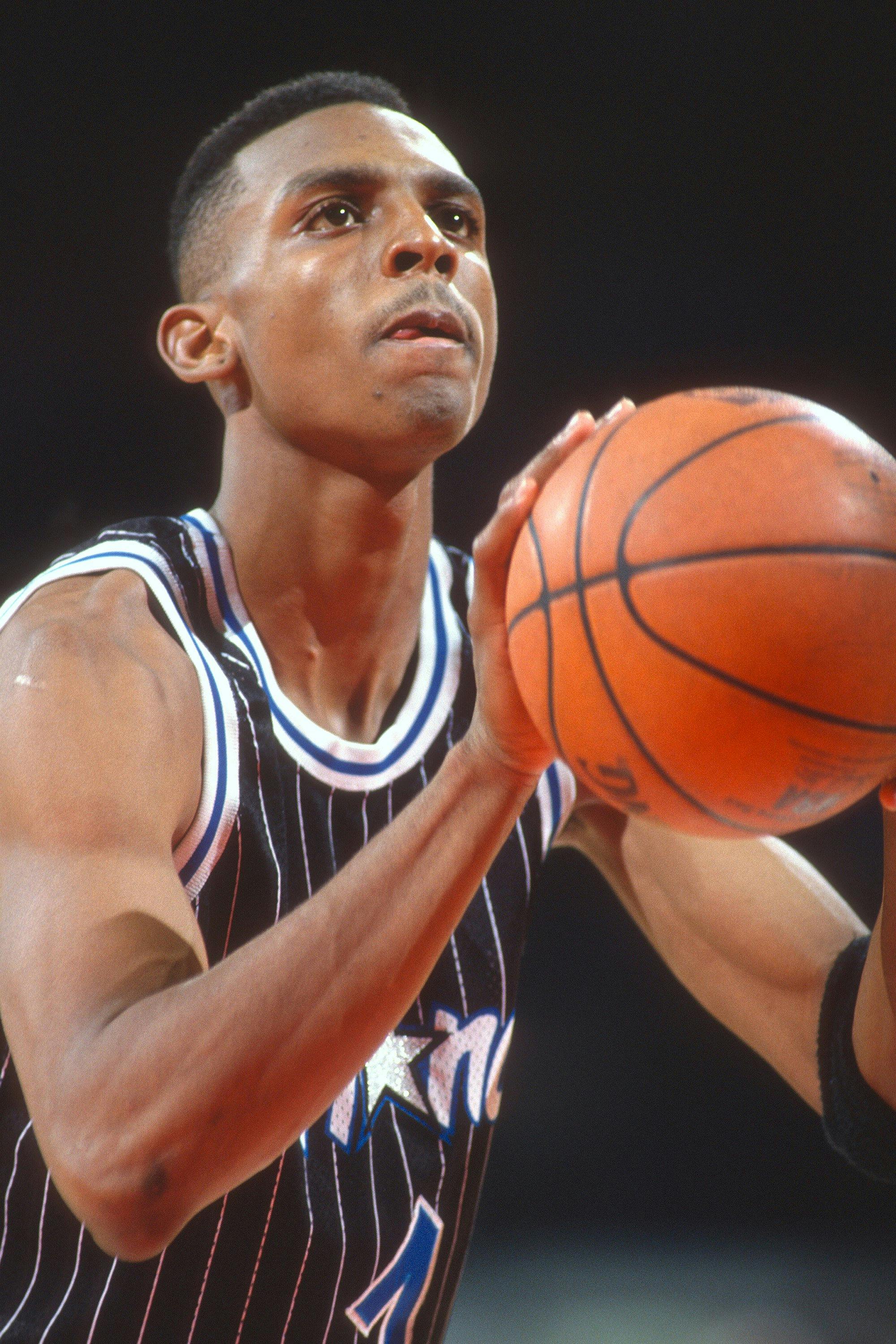
Photos by Focus on Sport via Getty Images
A year after taking Shaq with the No. 1 pick, the Magic’s fortunes once again were the envy of the NBA, as they landed the top pick for the second year in a row. With fans expecting the franchise to draft Fab Five star Chris Webber, the Magic immediately drew scorn by selecting the gifted forward but turning around and trading him for a young guard out of Memphis with a funny name. Anfernee Hardaway was a 6’7” point guard with the flash of Magic and the athleticism of Michael. And once he arrived in Orlando, he gave O’Neal a perimeter counterpoint and playmaker to feed off of. In 1993-94, “Penny” Hardaway led the team in assists, Shaq was named an All-Star, and the Magic won 50 games, netting the franchise its first-ever playoff berth. And the NBA had its newest glamour team.
“He brings the dance back into basketball,” former Magic owner Rich DeVos said of Hardaway. “Call it the dance, the flair. But it’s the aura, the fancy moves, the ballet touch. He’s got it.”
By 1995, the Magic had the world convinced that they were the NBA’s newest dynasty in the making. A generation of young fans clamored for more Shaq and Penny, as they became the two most marketed stars in the league, with Michael Jordan off playing baseball in the minor leagues. In March 1995, His Airness returned to the Chicago Bulls, and the upstart Magic were put on guard. A face-off in the Eastern Conference playoffs that year ended with Orlando victorious over the legend, and it seemed that the torch had been passed.
“Michael was really hurt losing that series to us and that entire summer we were on his mind,” Hardaway told Colin Cowherd. “He came back with a vengeance and was a totally different player. He was so tenacious on defense because it was more personal.”
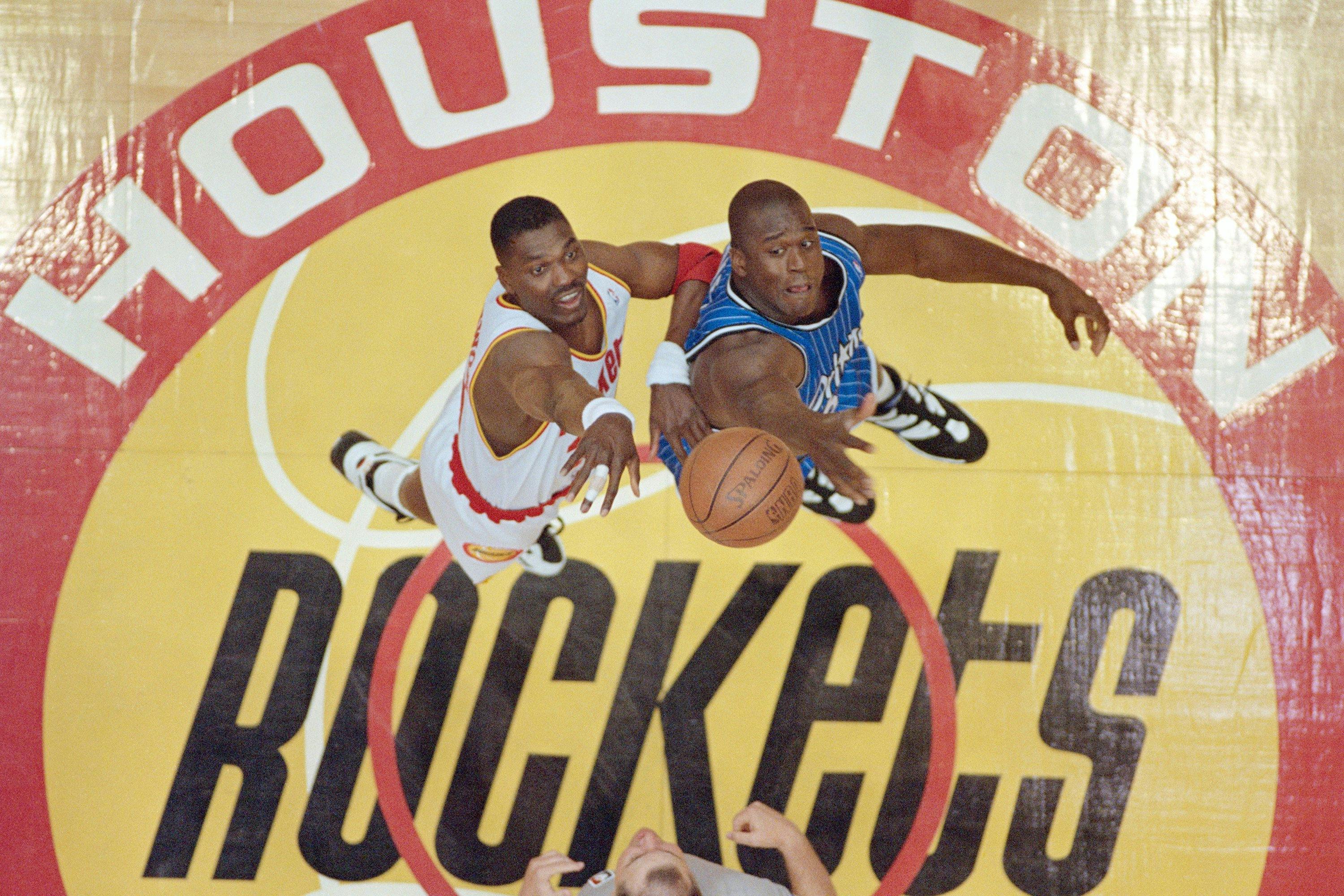
Photo by Allsport/Getty Images
The old guard wasn’t going quietly into the night. The 1995 Finals saw the Magic facing off against the defending-champion Houston Rockets, and the young kingslayers were highly favored to take the crown from the elder statesmen. But the Rockets’ experience would prove too much for the cocky kids from Orlando. The team folded in the very first game, setting a tone for how the entire series would eventually go. Orlando lost an overtime thriller on a tip-in by legendary Rockets center Hakeem Olajuwon, the game having slipped from their grasp on the heels of a disastrous four missed free throws in the 4th quarter by Magic guard Nick Anderson.
“I’ve had other coaches and people around the league tell me that if we had won that first game that they think we would have won the series,” former Magic head coach Brian Hill said in 2015. “I still believe that to this minute. If we had won Game 1 our team would have had a whole different mindset. It seems like Game 1 took so much out of our guys. Losing that game because we were playing so well for such a long period of time, and then it was so hard to get them back after that.’’
It would only get tougher from there. Jordan returned the following year even more determined to reclaim his crown. The Bulls swept the Magic in the 1996 playoffs, en route to Jordan’s fifth of six championships.
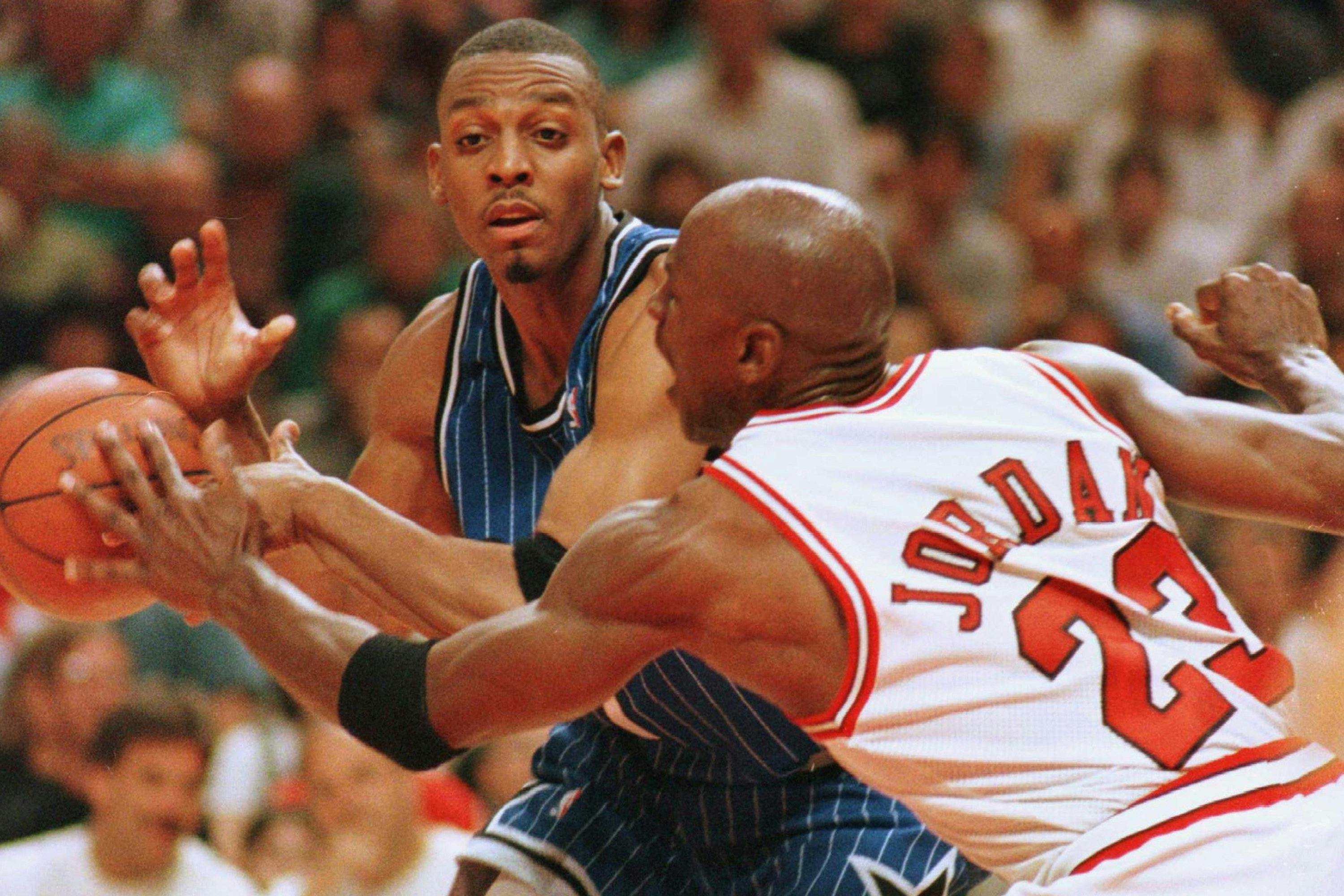
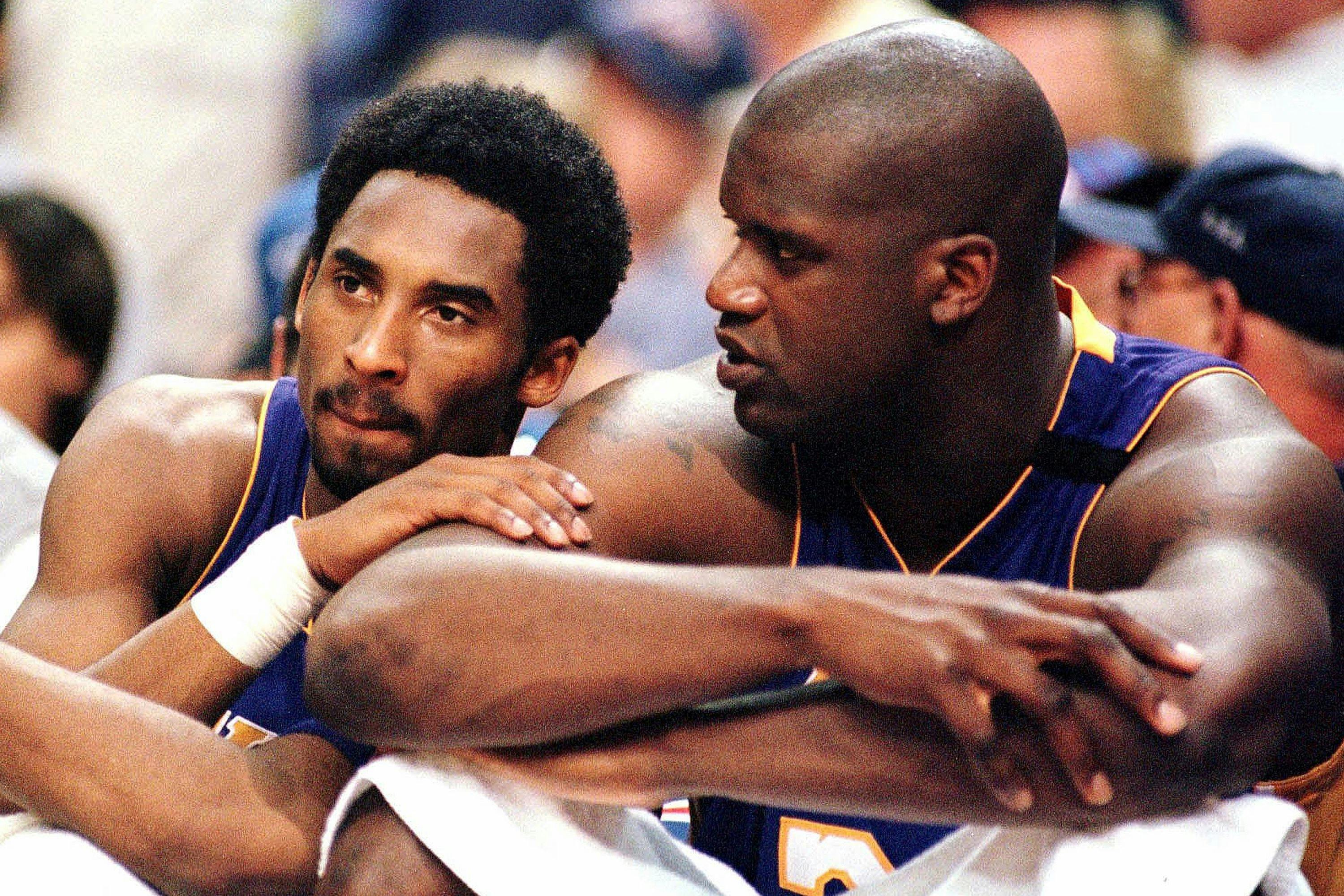
Photos: Getty Images
The summer after their drubbing by the Bulls, the Magic watched as superstar center Shaquille O’Neal departed the organization for the Los Angeles Lakers, where he’d team with Kobe Bryant to win three NBA titles. The Magic’s brief run was over. Penny Hardaway’s peak would be cut short by injuries, and a new wave of stars would overshadow both Hardaway and the impact of the Magic.
Ultimately, the Philadelphia 76ers’ Allen Iverson would come to be the Hip-Hop generation’s most unapologetic NBA icon. His aggressive style of play, his tattoos, his cornrows and chains — it all dripped with a rapper’s bravado in a way that eclipsed those who’d come before. But it’s important to remember the Orlando Magic as the harbingers of the wave that would define the NBA in the late 1990s and early 2000s. For one glorious run in 1995, Shaq and Penny were the coolest thing in sports. And if you were a fan watching, you knew the game was changing. Nothing was ever the same.



